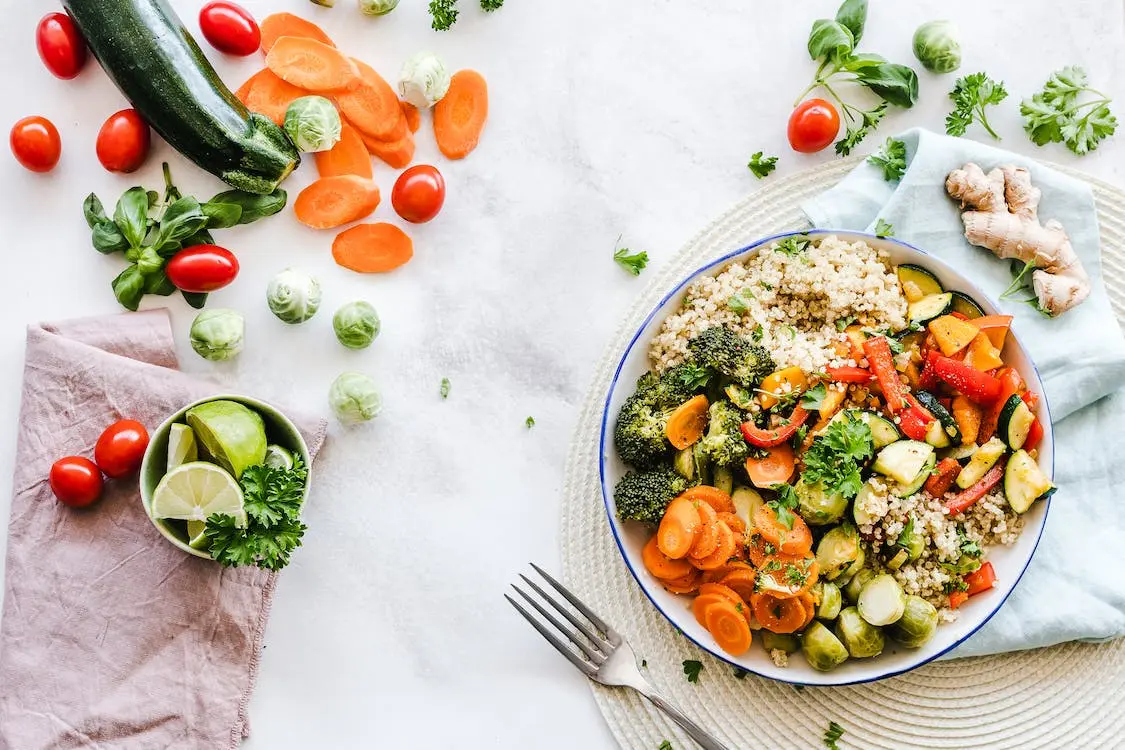Are you looking to kickstart a healthier lifestyle and embrace the world of low-carb eating?
If so, you’re in the right place. Making the transition to a low-carb diet can be a game-changer for your overall well-being.
It’s not about deprivation but rather a smart choice to fuel your body with the right nutrients.
In this article, we’ll guide you through the top 10 essential notes for beginners, helping you understand the ins and outs of a low-carb diet.
Chapter 1: What is a Low-Carb Diet?
Before diving in, let’s get a clear understanding of what a low-carb diet actually is.
Defining Low-Carb Diets
A low-carb diet restricts your intake of carbohydrates, typically found in foods like bread, pasta, and sugary items. Instead, it encourages the consumption of healthy fats and protein.
The Science Behind It
Reducing carbs can lead to a state of ketosis, where your body burns fat for energy instead of carbs.
This process can help with weight loss and improve overall health.
Chapter 2: The Benefits of Going Low-Carb
Now that we know what a low-carb diet is, let’s explore its advantages.
Weight Loss
One of the most significant benefits is effective weight loss due to reduced calorie intake and increased fat burning.
Better Blood Sugar Control
Low-carb diets can help regulate blood sugar levels, making them a viable option for people with diabetes or insulin resistance.
Improved Heart Health
These diets may lower the risk of heart disease by reducing triglycerides and increasing “good” HDL cholesterol.
Chapter 3: Foods to Include in Your Low-Carb Diet
You might be wondering what you can eat. Here’s the scoop.
Lean Proteins
Incorporate foods like chicken, turkey, fish, and tofu to meet your protein needs.
Non-Starchy Vegetables
Load up on greens like broccoli, spinach, and cauliflower. They’re rich in nutrients and low in carbs.
Healthy Fats
Avocado, nuts, and olive oil are excellent sources of healthy fats, which are essential in a low-carb diet.
Chapter 4: Foods to Avoid
Equally important is knowing what to steer clear of.
Sugary Foods
Candies, sodas, and desserts are off-limits as they are high in carbs and can spike your blood sugar.
Starchy Foods
Bread, pasta, rice, and potatoes are carb-heavy and should be minimized.
Processed Foods
These often contain hidden sugars and unhealthy fats, so keep them out of your shopping cart.
Meal Planning
Getting started with low-carb eating requires some meal planning.
Balanced Meals
Strive for a balance of protein, healthy fats, and non-starchy vegetables in every meal.
Snack Smartly
Have low-carb snacks like nuts or Greek yogurt to curb cravings.
Chapter 6: Staying Hydrated
Hydration is key for overall health, and it plays a significant role in a low-carb diet.
Water is Your Best Friend
Aim to drink plenty of water throughout the day to stay hydrated and curb false hunger.
Chapter 7: Adjusting to the Transition
The initial transition to a low-carb diet can be challenging, but it’s worth it.
Carb Withdrawal
You might experience some discomfort at first, but it usually passes within a week.
Seek Support
Consider joining a low-carb community or seeking advice from a nutritionist.
Chapter 8: The Importance of Fiber
Fiber is crucial, even on a low-carb diet.
Choose High-Fiber Foods
Opt for foods like chia seeds, flaxseeds, and vegetables to meet your fiber needs.
Chapter 9: Monitoring Your Progress
To ensure your low-carb diet is on track, monitor your progress.
Keep a Food Diary
Writing down what you eat can help you stay accountable.
Chapter 10: Celebrate Your Success
Finally, it’s essential to celebrate your achievements.
Small Wins Matter
Celebrate milestones like improved energy levels or fitting into those old jeans.
Conclusion
Transitioning to a low-carb diet is a significant step towards improving your overall health and well-being.
By following these top 10 notes, you’ll be better prepared for success on your low-carb journey.
Remember, it’s not just about losing weight, but about feeling healthier and more energetic in the long run.
FAQs
1. Is a low-carb diet suitable for everyone?
A low-carb diet can be beneficial for many, but it’s essential to consult a healthcare professional before making significant dietary changes, especially if you have underlying health conditions.
2. Can I eat fruits on a low-carb diet?
While fruits are generally higher in carbohydrates, you can still enjoy them in moderation. Opt for lower-carb options like berries and melons.
3. How quickly can I expect to see results on a low-carb diet?
Results vary from person to person, but some individuals notice changes in their weight and energy levels within a few weeks of starting a low-carb diet.
4. Are there any potential side effects of a low-carb diet?
Some people may experience side effects like “keto flu,” which includes symptoms like fatigue and headaches during the initial phase. These usually subside within a week.
5. What’s the difference between a low-carb diet and a ketogenic diet?
A low-carb diet restricts carbs, but not as severely as a ketogenic diet, which focuses on a high-fat, very low-carb intake, inducing a state of ketosis. Both have similar health benefits but different levels of carb restriction.
Incorporating these top 10 notes and keeping these FAQs in mind will help you embark on a successful low-carb journey, ultimately leading to a healthier and more energetic you.

